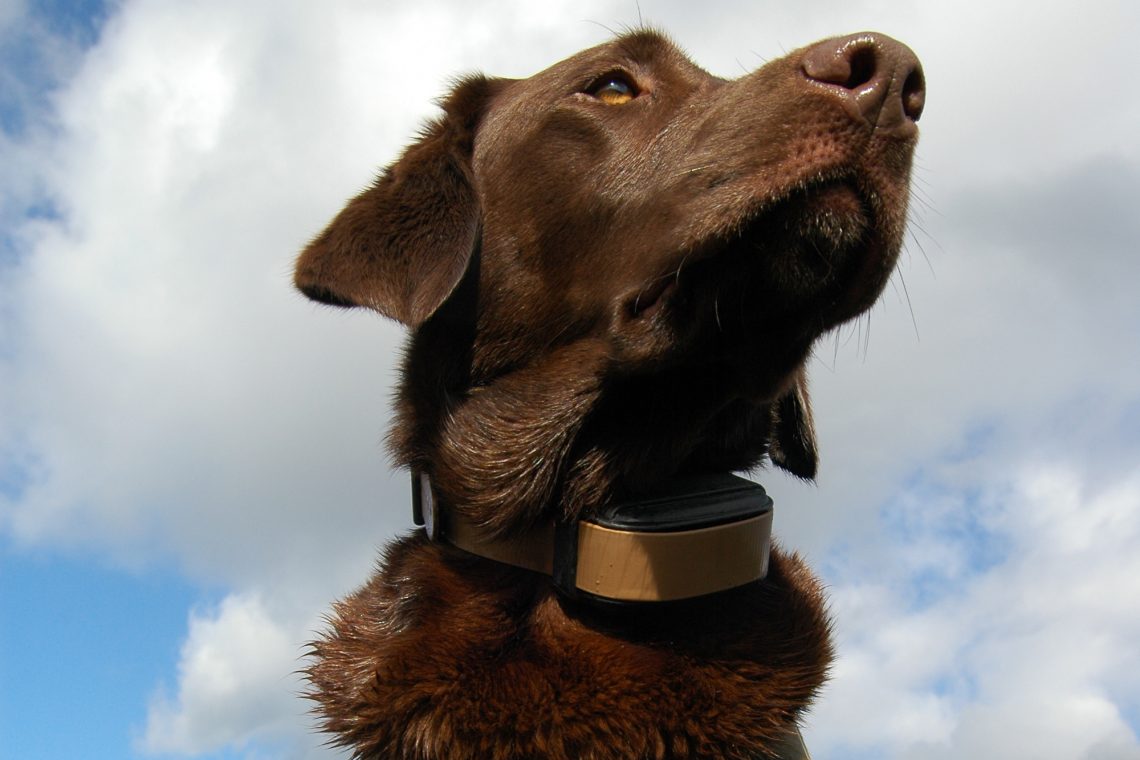
Best Collars To Train A Dog
When it comes to training your furry friend, selecting the right collar is essential. With the wide range of collars available, it’s essential to choose one that provides effective training while also being comfortable and safe for your dog. In this article, we will provide you with an overview of the best collars available to train your dog. We will discuss the types of collars, their features, and the benefits of using each one to help you make an informed decision that best suits your pet’s needs.
Types of Training Collars
Training collars are a helpful tool for pet owners looking to reinforce positive behaviors and correct unwanted habits in their furry friends. There are many types of training collars available on the market, each one offering unique features that make them useful in different situations. From flat collars to electronic collars, let’s explore some common types of training collars and their benefits.

Shock Collar
As a content writer, one must understand the different types of dog collars available in the market. The shock collar, commonly known as the electronic dog training collar, is a training tool that emits an electric shock to the dog’s neck to correct unwanted behaviors.
The shock collar is appropriate for dogs with severe behavioral problems that are difficult to correct with positive reinforcement training. This collar is not recommended for dogs with anxiety or fear-related behavior as the electric shock can increase their stress levels and worsen their condition.
The shock collar has several levels of intensity, ranging from low to high. The intensity can be adjusted depending on the dog’s response to the shock. A low-intensity shock is suitable for mild corrections, while a high-intensity shock is appropriate for severe behavior issues. The levels of intensity work by sending a static correction to the dog’s neck when it displays unwanted behavior. This helps the dog associate the unwanted behavior with the shock and eventually correct it.
Prong Collar
A prong collar is a training tool that is used to control a dog’s unwanted behaviors like pulling on the leash, jumping, or any other aggressive behavior. It consists of a chain link collar with a series of prongs that sit against the dog’s neck when tension is applied through the leash.
To use a prong collar for training, fit the collar properly around the dog’s neck, ensuring that it is snug but not too tight. Attach a leash to the collar and use it to communicate with the dog. The prongs help to create a natural pulling and pinching sensation on the dog’s neck, which helps to control the dog without causing discomfort or harm.
The benefits of using a prong collar include better control of the dog, improved communication, and quicker results compared to other training methods. However, some drawbacks include the risk of misuse or overuse leading to injury to the dog or aggression, and improper fitting can make it uncomfortable for the dog.
Choke Collar
A choke collar, also known as a slip collar, is a type of collar traditionally used for dog training. It is made of a simple chain or nylon cord that can be tightened when pulled. The idea behind the choke collar is to create an unpleasant sensation around the dog’s neck when it pulls on its leash, discouraging the behavior.
The benefits of using a choke collar include its simplicity and affordability. It can be an effective tool for teaching leash manners and controlling a dog’s behavior during training. However, there are also several drawbacks associated with its use that dog owners should be aware of.
One main drawback is that, when used incorrectly or excessively, it can cause physical harm to the dog. A choke collar can cause irritation, bruises, and neck injuries. Additionally, if the collar is not fitted properly or is too tight, it can restrict the dog’s breathing and cause discomfort or harm.
Head Collar
Head collars are a type of collar used for dog training that provides gentle control and discourages pulling without causing harm. They are typically made of a soft, comfortable material that fits over the dog’s nose and behind their ears.
To use a head collar, the owner will need to introduce it slowly to their dog and get them used to the sensation of it on their face. Once the dog is comfortable wearing the head collar, the owner can use the leash attached to the collar to gently guide the dog’s head and direction. Unlike traditional collars that can cause discomfort or harm when the dog pulls, head collars work by redirecting the dog’s attention away from pulling and towards the owner instead.
Using a head collar can have significant benefits over other types of collars. They provide a gentler approach to training and can be especially helpful for dogs with leash aggression or those that tend to pull a lot. Additionally, head collars can work well alongside positive reinforcement training techniques, such as using treats or praise to motivate good behavior.
Electronic Dog Training Collars
Electronic dog training collars are a type of collar that uses technology to assist in training. They are designed to provide a range of stimulation levels, from mild to intense, to aid in correcting unwanted behaviors in dogs. While they may not be suitable for every dog, electronic collars can be an effective and helpful tool when used correctly.
There are several types of electronic collars on the market, each with its features and benefits. Some collars work by emitting a vibration, beep, or tone. Other collars provide stimulation in the form of static shocks or even spray.
When choosing an electronic collar, it’s important to consider factors such as the range of stimulation levels, the type of correction provided, and the dog’s size and temperament. For example, a small dog may require a collar with a limited range of stimulation levels, whereas a larger dog may require a collar with a wider range of options.
Martingale Collar
Martingale Collar is a popular choice among pet owners for training their dogs. Also known as a limited-slip collar, it is designed to prevent dogs from slipping out of their collars while on walks or during training sessions.
The unique feature that distinguishes the Martingale collar from regular collars is the presence of two loops. One loop is the collar itself, and the other is an adjustable loop that tightens when the dog pulls on the leash. The adjustable loop ensures that the collar remains snug around the dog’s neck, preventing any chances of slipping out.
The Martingale collar’s design makes it an excellent choice for dogs with necks that are larger than their heads, such as Greyhounds, Whippets, and other breeds with similar body types. Typically, these breeds have slim necks that can slip out of a regular collar while walking or running, resulting in an unsafe situation.
Adjustable Martingale Collar
The Adjustable Martingale Collar is a unique training collar that features a combination of a traditional flat collar and a limited-slip tightening feature. The collar is designed to prevent dogs from escaping or backing out of the collar during leash walks, making it an essential tool for pet owners who value safety and control during training sessions.
One of the primary benefits of the Adjustable Martingale Collar is that it is especially useful for dogs with slim heads or breeds that are prone to slipping out of collars, such as Greyhounds or Whippets. These types of dogs have slim necks that can easily slip out of a regular collar, resulting in an unsafe situation. The adjustable loop of the Martingale collar ensures that the collar remains snug around the dog’s neck, preventing any chances of slipping out.
The safety and control provided by the Adjustable Martingale Collar make it an excellent choice for pet owners who want to train their dogs while prioritizing their furry friend’s safety and comfort. The gentle yet effective approach of the collar ensures that the dog is not choked while being trained.
Flat Collars and Standard Collars
Flat collars and standard collars are types of collars that are commonly used for dogs. These collars are designed primarily to hold identification tags but can also be used for training purposes. Unlike other training collars that are designed to offer control or correction, flat collars, and standard collars provide minimal control and are ideal for dogs that do not engage in unwanted behaviors.
Flat collars and standard collars are made from various materials such as nylon, leather, or fabric. They typically feature a buckle or clip fastener that enables easy attachment and removal. These collars are also adjustable, allowing you to find the perfect fit to ensure your dog is comfortable. They are available in different colors, sizes, and designs, making it easy for you to choose one that matches your dog’s personality.
While flat collars and standard collars do not provide the same level of control as other training collars, they are an excellent option for everyday use. They are easy to put on and take off and are comfortable for your dog to wear throughout the day. Additionally, they are an easy and affordable way to ensure that your dog always has their identification tags with them, making it easy to reunite you with your furry friend if they ever get lost.
Smart collar/Remote Dog Training collar
Smart collars and remote dog training collars are one of the Best collars to train a dog, these advanced training tools that offer pet owners a new level of control when training their furry friends. These collars are equipped with modern technology that allows pet owners to train their dogs remotely, providing real-time feedback on their behavior.
Smart collars use GPS technology to track and monitor a dog’s outdoor activities, while remote dog training collars use a remote control system to send signals to the collar. The signals function as a training tool, teaching the dog to associate certain behaviors with the corresponding level of intensity or stimulation.
One of the key features of smart collars and remote dog training collars is their adjustability. They come in different sizes to fit various neck sizes and can be adjusted to find the perfect fit for your dog’s comfort and safety. This adjustment feature ensures that your dog can wear the collar for extended periods without experiencing discomfort.

Conclusion
In conclusion, smart collars and remote dog training collars are excellent choices for dog owners looking for effective training tools. They are adjustable to fit various neck sizes, and their levels of intensity and stimulation can be customized based on the dog’s training needs. These collars offer several affordable options with extended battery life, ensuring pet owners can use them for multiple training sessions.



